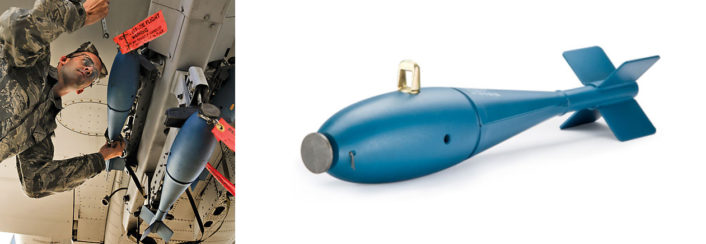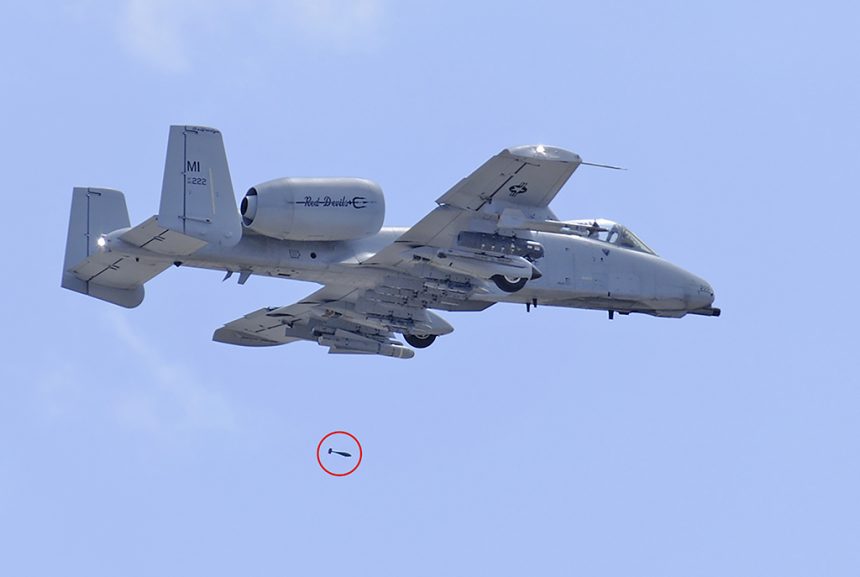Accident Happened Over Controlled Range, Practice Bombs Remain Missing.
A U.S. Air Force A-10 Thunderbolt II was involved in a bird strike incident that resulted in the loss of three practice bombs over a restricted bombing range in northern Florida on Monday. There were no injuries reported.
According to a brief report published by the Air Force Times attributed to The Associated Press, “The Air Force said it didn’t know where the training bombs landed, but the suspected area was about 54 miles (87 kilometers) south of the base near Suwanee Springs in Northern Florida.”
The Air Force Times report went on to say, “Moody Air Force in central Georgia said in a news release there were no immediate reports of injuries or damage after the 25-pound (11-kilogram), non-explosive training munitions were dropped Monday afternoon by an A-10C Thunderbolt II jet. The base said a ‘bird strike’ had caused ‘an inadvertent release’ of the three dummy bombs.”
There are no reports of the condition of the A-10C ground attack aircraft involved in the incident.
Although the U.S. Air Force did not officially confirm the type of practice munition lost in the incident, they are likely the Air Force’s standard BDU-33 training bomb. This small training bomb is commonly used on the A-10 and other aircraft such as the F-16.
According to the specifications and description on the manufacturers’ website, the BDU-33 is a standard 25-pound practice bomb used by both the USAF and the U.S Navy. The manufacturer mentioned the BDU-33 is used on, “almost every fixed-wing fighter/bomber aircraft in the U.S. inventory.” The small, blue painted practice bombs are also referred to as the “MK-76” or “Mark-76”. The BDU-33 does not carry a destructive explosive warhead, but a small spotting charge that releases smoke when the bomb strikes a target as an aid in judging bombing accuracy in training. The BDU-33 is often used by the Air Force and Navy to simulate the delivery of the Mk-82 500-pound unguided freefall bomb. The small BDU-33 is made of cast iron and has miniature tail fins for stabilization during ballistic flight to its intended target.

On November 26, 2006, an A-10 of the 25th Fighter Squadron accidently dropped a BDU-33 practice munition on a factory in Eumseong, South Korea. Following that accidental release, the parent unit of the aircraft, the Osan-based 51st Fighter Wing, temporarily discontinued the use of the BDU-33 on their A-10 aircraft.
In two additional incidents on November 15, 2006 and then again on December 6, 2006, F-16 aircraft from Misawa, Japan experienced accidental releases of BDU-33s. Air Force officials conducted investigations into the incidents and later returned the BDU-33 practice munition to service with both the A-10 and the F-16.
The incident comes two days after U.S. President Donald Trump told USAF airmen in South Korea that the A-10 is, “just a very great machine, and we’re looking at ways that maybe we can keep it around a little bit longer.”









